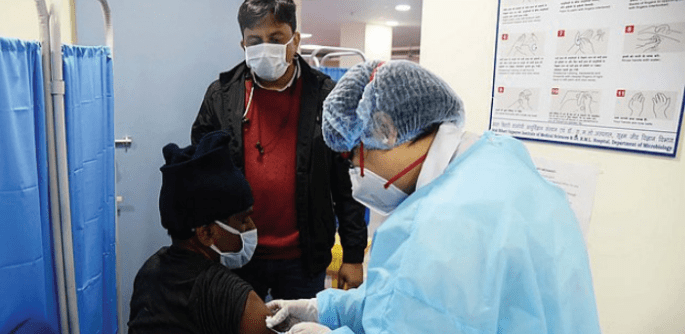
When COVID-19 broke out in China in December of 2019, the lives of people all around the world changed drastically. This major health crisis affected millions mentally, physically and economically without class or status discrimination. With sudden restrictions in the movement for months at a time, a pandemic affecting and killing humankind in drastic numbers, being isolated from friends and family and the ever-growing fear of uncertainty had a dire eff ect on people’s mental and psychological health. The world was forced to implement multiple changes all at once-strict lockdown measures, mandatory use of face masks in public, social distancing, constant sanitizing, change of work and education to online. Trying to physically adjust to all these changes along with the constant scrutiny of one’s health and unpredictable situations outside took a toll on the mental wellbeing of the majority of the population. Psychological distress like stress, anxiety and panic increased notably among the general public as a repercussion of the pandemic. People in bulks lost their jobs which made it hard for them to provide for their families especially those who were the sole breadwinners. This led to an increase in anxiety and depressive symptoms among the youth. A study conducted in China aft er the outbreak showed 14.4 per cent of the youth showed signs of Post Traumatic Stress Disorder. Higher levels of suicide attempts were seen due to the combining of stress and ambiguity with pre-existing mental health and psychological issues. 50.43 percent of the participants in a study conducted in a Spanish university reported experiencing acute mental distress majorly during the first week of isolation. In Bangladesh 15 per cent of its students experienced extreme depression and 18.1 per cent experienced severe anxiety since the beginning of the pandemic. They also reported having seen a distressing amount of cases mostly among the older student population who had to support themselves financially. Other passive coping methods seen to be used are avoidance and self-blaming which are maladaptive and cause more harm to the person in the longer run.
Many were in mourning due to the loss of their near and dear ones. The availability of hospital beds, oxygen cylinders and vaccines only made the situation worse aggravating the already high-stress levels. There were also reportedly higher levels of distress, loneliness and fears due to constant confi nement and the spread of misinformation.
Front line and health care workers’ main source of stress and fear was about the safety of their family and friends and their shortcomings. While COVID in itself can be the cause of mental and neurological complications there has also been an increase in drug and alcohol use seen among the people to cope with the situation.
In recent times more people have started to seek out help and help groups to cope with the increasing levels of stress and anxiety caused by the pandemic. This has led the World Health organization to prioritize mental health services along with essential services that need to be provided to every country. They have also allocated resources in the field of mental and psychological health to monitor and improve the psychological impact that has been caused by COVID-19.
10 Jan 2022
Keerthana Unni